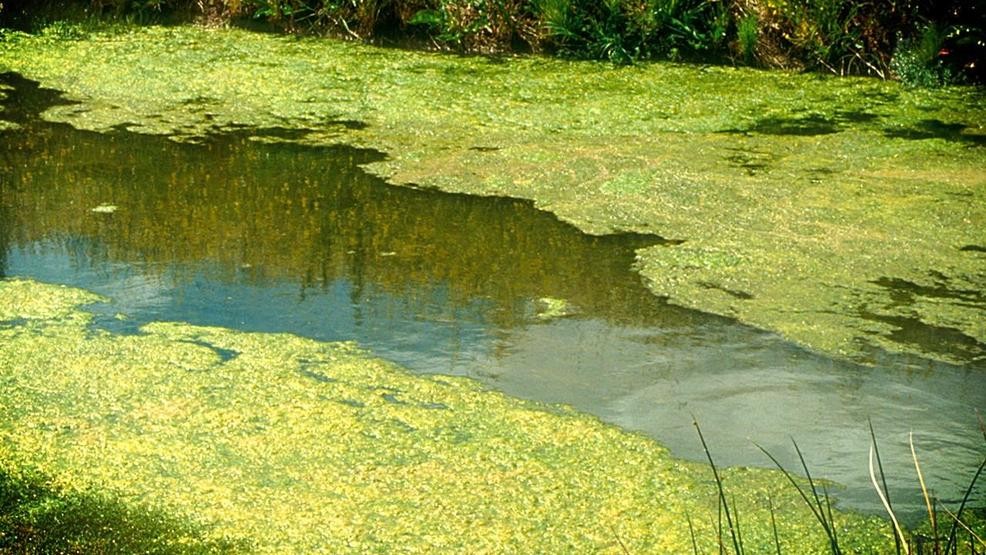What is Blue-Green Algae?
Blue-green algae, also known as cyanobacteria, are microscopic bacteria found in freshwater lakes, streams, and rivers. Blue-green algae colonize to create blooms which can produce toxins. Though not all blooms create toxins, it is not possible to determine without testing. All blooms should be treated as if they are toxic. The blooms give the water a “pea soup” color which can also look like bright blue and green paint floating on the surface. The blooms can get blown around on the surface by the wind to form a thick layer near the shore, easily accessible to people, pets, and livestock. These blooms are most likely to form on still waters with excess phosphorus and nitrogen. They can also form in salt water.

How Are Pets Exposed?
Animals can be affected by drinking contaminated water, or licking it off their fur. Just a few gulps is all it takes to see affects. Dogs with exposure to water are especially at risk. Hunting dogs are at an increased risk due to increased environmental exposure.
Is it Harmful?
Blue-green algae poisoning can be fatal. Just last week, 3 dogs in North Carolina died after ingesting affected water. The algae blooms produce two types of toxins, microcystins and anatoxins. Microcystins can result in liver damage or failure, while anatoxins affect the nervous system.
What Happens After Ingestion?
Signs of liver damage include vomiting, diarrhea, bloody stool, pale membranes, seizures, shock, and death. Neurotoxicity symptoms can include muscle tremors, excessive salivation, muscle rigidity, paralysis, blue discoloration of mucus membranes, and difficulty breathing.
What is the Treatment?
Unfortunately, there is no antidote for the toxins produced by blue-green algae. Immediate veterinary care is imperative. Treatments may include anti-seizure medications, liver support, and oxygen. Please call your veterinarian immediately if you think your dog may have been exposed. If it is after-hours, please call PETS Hospital.
